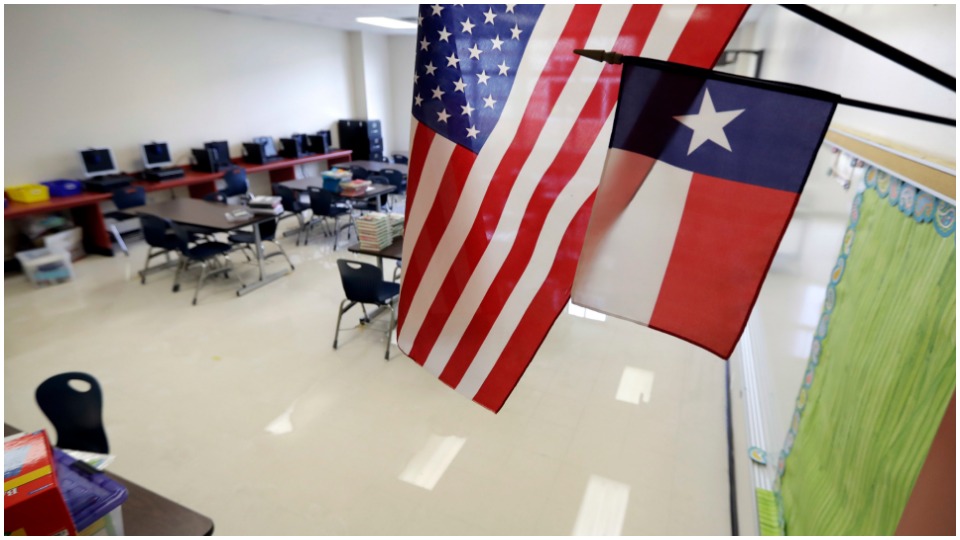
The coming months will mark the 18th time that I have begun a school year. It promises to be a year like no other, but not for the reasons that we would generally presume. The joy and anticipation of meeting new students and getting off to a fresh start in the adventure of learning are lacking. The cloud of a deadly pandemic hangs over us, and it’s the first time teachers and support staff have received ultimatums to return to school or lose their jobs and livelihood. For some, the threat is greater than for others. I fall into the former category.
COVID-19 has hit my family and friends in ways perhaps unlike the majority have experienced, though all of us have been touched in some way. I personally have lost family members to the pandemic, and currently, an entire branch of my family and extended family now struggle with the illness, including a previously healthy 38-year-old nephew who is on a ventilator. The reality of the pandemic could not be more clear nor more serious.
As a teacher in Texas, and as a labor leader among teachers, I have pored over the guidelines offered by the Texas Education Agency and the legalese of accompanying documents searching for hope that I might find a way to convince my school district that the time is not right to reopen schools. We must expect that a large number of students will arrive on the first day infected with COVID-19.
My thoughts race back to earlier in the year when Texas Lt. Gov. Dan Patrick, a person holding immense power in the state, appeared on a Fox News program and suggested that lives must be sacrificed in order to preserve the economy and the way of life people have come to expect as Americans. His words reached me with shock and disbelief. “Surely, things will not go this far,” I thought. However, I was wrong.

In the past weeks, the determination to reopen schools was underscored by President Donald Trump and Education Secretary Betsy DeVos. Following suit, Texas Gov. Greg Abbott and Education Commissioner Mike Morath vowed to begin in-person classes on time. It began to appear that all hope was lost. This occurred at the exact time that the governor warned the state to be prepared for the pandemic to become much worse. Texas teachers began to feel like cattle sent to slaughter, especially given that schools in the epicenters of the virus received the same orders as those in smaller, less affected communities.
As teachers, we are taught and encouraged to work in a collaborative style. It’s the way we do things. As my district of 7,000 employees and 51,000 students began to prepare for reopening, there was an anticipation on the part of its staff that we would be involved in the process. We looked for a multifaceted survey similar to what parents of the district had received earlier. Nothing of that sort came. Instead, we received a survey with one question only: “Will you return to work on August 10? If not, be prepared to file for allowable leave or resign.” It came to us as a coldly-written demand, an ultimatum that felt more like a deadly threat. This was certainly not the note of collaboration that we had hoped to receive.
As the president of my teachers union local, a merger of AFT and NEA, I began to contact members and non-members alike. Like never before perhaps, this felt like a time for action, so I contacted community members as well. I sent out my local and state organizations’ petition to the governor asking him not to act in haste. Most replies I received from the community were supportive, but there were those who occasionally would say, “I don’t care about you or your agenda, I need my kid back in class.” As teachers, we too want the students back in class, but we want to follow the guidelines of the experts and of science rather than the whims of right-wing politicians, who, like Lt. Gov. Patrick, have made their intentions clear.
For teachers, returning back into classrooms filled with 25-30 students is unacceptable. Crowded hallways and buildings with 1,500 to 3,000 students each are unacceptable. Our leadership—whether at the level of the school district or state—knows well that it is impossible to mitigate so much as the common cold in such an environment and certainly much less with the highly contagious novel coronavirus.
As a classroom teacher, my concern is not only for myself. Rather, at this time, I now represent my fellow workers. I plead with their voices—the teachers, bus drivers, paraprofessionals, cafeteria workers, and custodians. I stand proudly with them, but I do so knowing full well the immense threat we face in returning to work. We understand that school must open and that learning must continue, but we ask for solutions that protect us, and we ask to be included collaboratively in arriving at those solutions. No one should receive the ultimatum of a cold demand to return or quit. No one should face the possibility of losing their means of livelihood or their life.
In a so-called “right to work” state like Texas, the unions have less power, no doubt—especially given that we are stripped of our collective bargaining rights and our right to strike. There is even a common misconception that teacher unions are illegal in Texas. This is all the more reason now for teachers everywhere to stand up and let their voices be heard loud and clear. It is, moreover, a reason to join teacher unions now. Many people have contacted me with fear asking, “What if the district finds out I signed a petition?”

For far too long Texas teachers have worked in an oppressive environment where their voices are silenced or not heard. For too long they have lived under the disciplinary threat for speaking out on matters pertaining to their work, safety, health, and well-being. A punitive culture has been established in our school system through years upon years of employees being systematically placed in a category somewhere beneath the management class on a footing not all that different in the eyes of administration from our students. This must end.
Recently, a friend and fellow union leader summarized the situation best by saying, “We are not asking our leaders and elected officials to hear our voices, we are begging them to hear us!” Recently glimmers of hope have appeared. Stories have emerged that the governor plans to announce that districts will have greater flexibility in determining the timeline to return to in-person classes. We consider this to be a great victory for teachers in our state.
Teachers have fought hard, and I am not alone among those who have stepped out and made their voices heard by speaking to new media, sending letters, and appearing before school boards to plead our case. Grassroots organizations have leaped into action forming caravans and socially distanced in-person sit-ins at the state capitol.
What takes place from this point is changing rapidly each day, but one thing is clear—the virus is escalating. The situation is growing worse with each passing day, and yet each passing day the President of the United States seems even more impervious to the needs of the American people for safety. With each day he appears to dig in deeper, looking for scapegoats, dismissing the opinions of scientific experts and the agencies responsible for disease control. It is as if lives do not matter—indeed they do not—to the current administration. We are at a point where we must speak up loud and clear. We must begin as a people to demand that the direction of our nation change.
Like free stuff? So do we. Here at People’s World, we believe strongly in the mission of keeping the labor and democratic movements informed so they are prepared for the struggle. But we need your help. While our content is free for readers (something we are proud of) it takes money — a lot of it — to produce and cover the stories you see in our pages. Only you, our readers and supporters, can keep us going. Only you can make sure we keep the news that matters free of paywalls and advertisements. If you enjoy reading People’s World and the stories we bring you, support our work by becoming a $5 monthly sustainer today.










